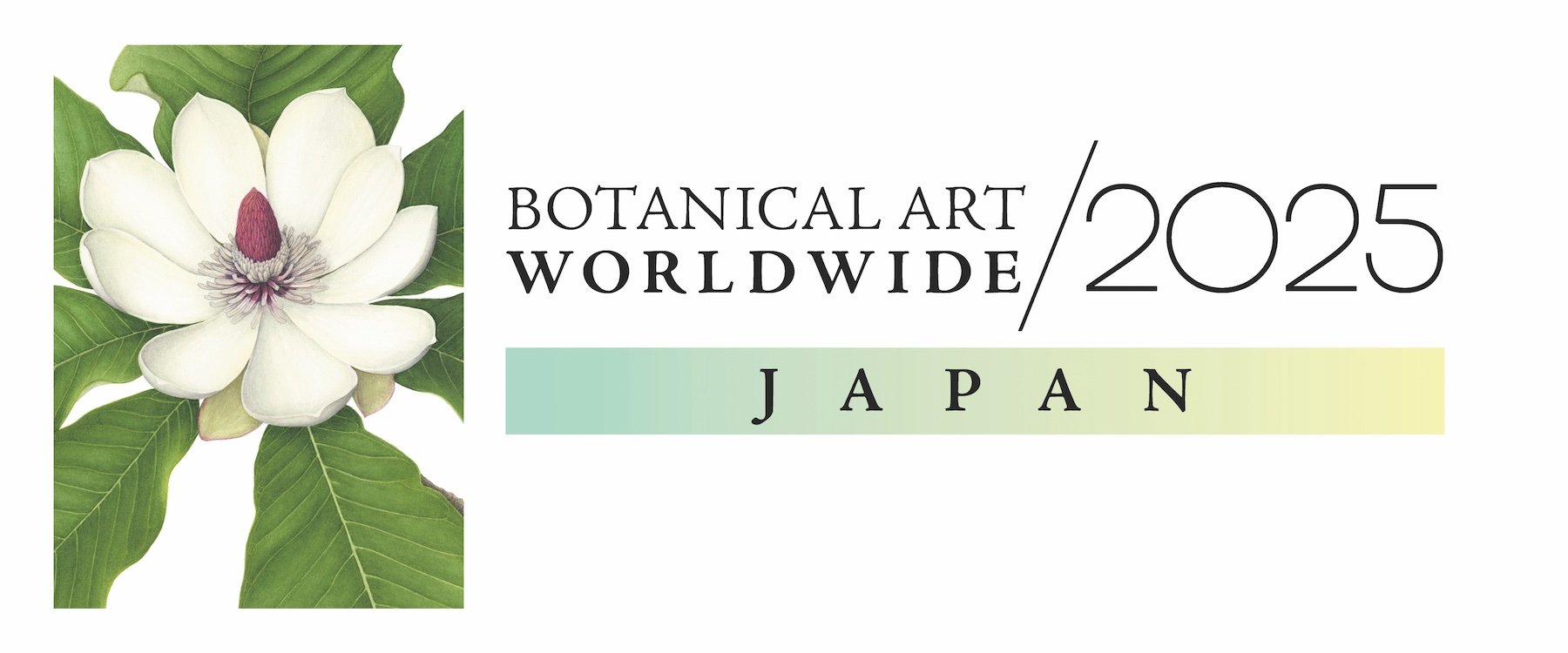Botanical Art Worldwide 2025
Japan
Japan's Useful Plants: Appreciating Them as Gifts to Our Lives
about
ASBA members in Japan and the artists who are active in Japan and abroad are participating
organizers
Makino Memorial Garden and ASBA members in Japan
steering committee
Akiko Enokido
Mieko Ishikawa
Yoko Harada
Keiko Nibu Tarver
Alan Tarver
jurors
Jin Murata (Botanist)
Kazuoki Makino (Art Curator)
Robin Jess (Botanical Artist)
venue
Makino Memorial Garden, Tokyo
https://www.makinoteien.jp/en-makino/
exhibition Dates
April 23 - June 30, 2025
May 18, 2025: Celebration of the Worldwide Day of Botanical Art
Events
Worldwide Day of Botanical Art Event on May 18th at The Makino Memorial Garden, Tokyo.
10:00-12:00/ 13:00-15:00
1) Leaf stamping activity for Kids to Adults
2) Painting vegetables with watercolor( beginners )
3) Painting leaves with watercolor (intermediates )
* tickets are sold out
Artist's Talks
May 3rd and Jun 22th
10:30-11:10
May 3: Akiko Enokido, Miki Horiguchi, Yoko Harada, Mariko Ikeda
June 22: Mariko Aikawa, Keiko Fujita, Mieko Ishikawa, Suguri Makino
* tickets are sold out
Zoom Webinar
"What is a Botanical Illustration?"
Speaker: Masayoshi Umebayashi
June 8: 14:00-15:30
Registration is free. Information will be available on the official website 30 minutes prior to the event. https://www.makinoteien.jp/
*The lecture will be given in Japanese only.
More Information
https://www.makinoteien.jp/en-makino/
Botanical Art Worldwide 2018
Native Plants of Japan
About this Exhibition
ASBA artists in Japan have prepared a group of native plant paintings to be exhibited at Makino Memorial Garden Gallery in Tokyo, from Apr. 28 to Jun 24, 2018. The Garden is named after Tomitaro Makino, respected worldwide as the father of Japanese systematic botany. He was also a talented illustrator. This makes the garden a perfect venue for continuing to tell the story of Japanese plants through botanical art. Some of Japanese native plants such as Camellia, Lily, Cherry-blossoms, Hosta, and Maple are popular as garden plants throughout the world. This exhibition will be showing these plants as well as other Japanese native plants named by Tomitaro Makino.
The Botanical Art Worldwide slideshow viewing; countries can be selected with the digital notebook to the right.
SOME INCLUDED ARTWORKS
Camellia japonica var. decumbens is called Yuki-Tsubaki in Japanese. "Yuki" means " Snow", and as the name indicates, it lives in the snowy region. In winter, Yuki-Tsubaki is pressed down to earth, covered with heavy snow. As spring approaches, and snow starts to melt, its branches would lift themselves up from the ground and put on bright flowers. It is one of the most adored flowers which hints the arrival of spring. Yuki-Tsubaki is known to be a fairly easy specimen to create variations, and it has contributed to breeding of double blooms.
Camellia japonica var. decumbens, watercolor on vellum, © Akiko Enokido
Mieko Ishikawa’s beautifully executed painting of this endemic Japanese Symplocos shows its flowers and berries as they grow on the tree, and breaks them out in close-up views. She deftly captures the back-curled, shiny leaves and confidently manages the complexity of many leaves and flowers in this highly detailed and naturalistic watercolor. Symplocos kawakamii is listed as Critically Endangered on the Red List of Japanese Threatened Plants.
Symplocos kawakamii, watercolor on paper, ©Mieko Ishikawa
Iris sanguine var. tobataensis is called Tobata Ayame in Japan. Tobata Ayame is recorded in a document published in 1875, found in a natural field of Tobata, Kitakyushu-city in Fukuoka Prefecture. As the region went though modern development and industrialization, the plant was thought to be extinct. But fortunately, it was found growing in a local farm 80 years later. Since then, local people have been taking care of the legendary flower. In 2009, this plant was recognized as a new native species of Japan.
Iris sanguine var. tobataensis, watercolor on paper, ©Yuko Inujima
There are 21 species of genus Mitella in the world: 12 are in Japan, 11 being native Japanese species. Dr. Makino made this particular drawing in early 1900s as Mitella japonica. But later on, this species was classified in more detail. The petals are slit in 5 wing-like shapes which have glandular spots, and there are dense processes on the seed. From these diagnostic characteristics, this Mitella was classified as Mitella stylosa var. makinoi. He used a very fine brush and sumo ink. His illustrations are extremely precise and are able to identify individual species with accuracy . Makino's magnificent illustrations have inspired admiration and respect for over 100 years.
One of the historical images drawn by Tomitaro Makino for Icones Florae Japonicae (1902) and on view in the Gallery. Mitella stylosa var. makinoi, ink on paper, ©Tomitaro Makino
Organizers
ASBA artists in Japan
Steering Committee
Mieko Ishikawa
Akiko Enokido
exhibition Venue
Makino Memorial Garden and Museum, Nerima, Tokyo
Installation view
Display devoted to Dr. Tomitaro Makino, including information, original drawings, and publications featuring his work.
Installation view. All photos courtesy Akiko Enokido.
Photo courtesy of Akiko Enokido
Location
Makino Memorial Garden and Museum, Tokyo Municipal Ward 6-34-4 Nerima-ku, Tokyo









